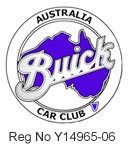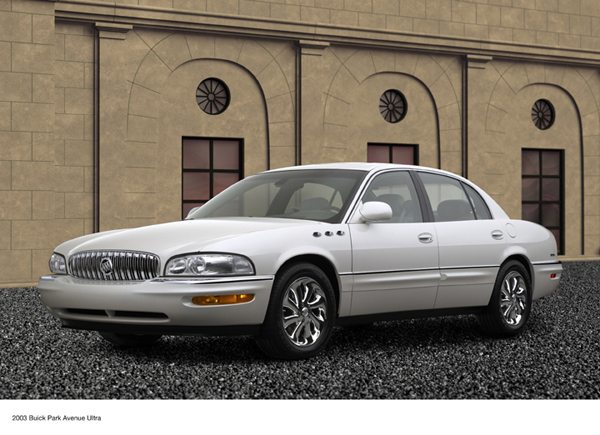100 YEARS OF
Buick
BUICK’S HERITAGE, IMPORTANT, DRAMATIC
Buick Communications – media release to commemorate 100 years of Buick (1903-2003)
by Lawrence R Gustin
DETROIT Buick Motor Division, which celebrates its centennial in 2003, claims one of the most important and dramatic chapters in the history of the American automobile. Important? Buick was the financial pillar on which General Motors “today the world’s largest automaker” was created.
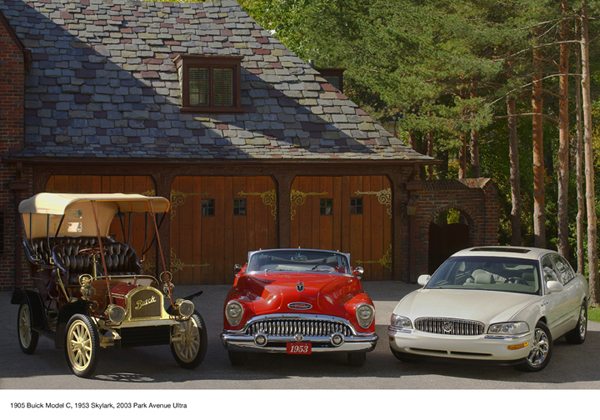 Also, the roster of Buick’s early leaders is an all-star lineup of auto pioneers – William C. Durant, GM’s founder; Charles W. Nash, a founder of what became American Motors; Walter P. Chrysler, founder of Chrysler Corp.; and Harlow H. Curtice, a GM chief executive in the postwar era and Time magazine’s 1955 “Man of the Year.”
Also, the roster of Buick’s early leaders is an all-star lineup of auto pioneers – William C. Durant, GM’s founder; Charles W. Nash, a founder of what became American Motors; Walter P. Chrysler, founder of Chrysler Corp.; and Harlow H. Curtice, a GM chief executive in the postwar era and Time magazine’s 1955 “Man of the Year.”
As legendary GM President Alfred P. Sloan Jr. once wrote, “Buick had the management of stars.”
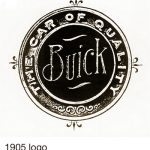 Then there’s Louis Chevrolet, who helped Durant found Chevrolet Motor Co. His earlier stint at Buick was not as an executive but as a star of the Buick racing team.
Then there’s Louis Chevrolet, who helped Durant found Chevrolet Motor Co. His earlier stint at Buick was not as an executive but as a star of the Buick racing team.
Dramatic? The division’s history has been exciting from the beginning. One example: Buick recovered from near-bankruptcy in 1904 to stake a claim as the No. 1 producer of automobiles in 1908 by some accounts surpassing the combined production of Ford and Cadillac, its two closest competitors.
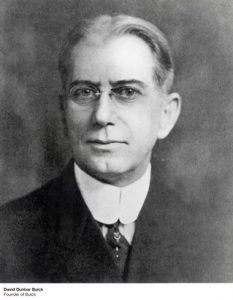
In 1940, Chris Sinsabaugh, who as a newspaperman had covered the automobile industry from its inception, reflected, “Buick was the first real success of the automobile industry and did more to promote the industry’s well-being in terms of public education, engineering advancement, and manufacturing progress than perhaps any other company.”
Yet in 1903, Buick Motor Co. was hardly one of the more promising of the hundreds of tiny automobile companies struggling to emerge across the country. Its founder had produced only two cars in three years of trying. David Dunbar Buick, though an inventor of merit, was sometimes scorned as a dreamer. His company was in debt, its engineer had just left, and its financial backer wanted to bail out.
David Buick, born in Arbroath, Scotland, Sept. 17, 1854, and brought by his parents to the United States at age 2, had been a successful plumbing inventor and manufacturer in Detroit when his head was turned by gasoline engines in the late 1890’s. He started a succession of companies: Buick Auto-Vim and Power Co. (1899 or 1900), Buick Manufacturing Co. (1901 or 1902) and Buick Motor Co. (incorporated May 19, 1903), all in Detroit.
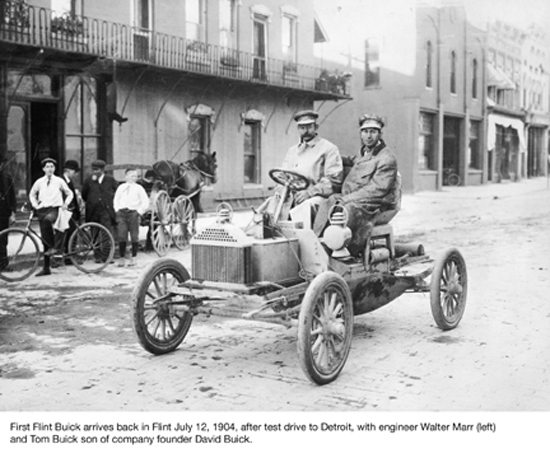
Buick and his engineers argued often and his companies were always under-funded and often underachieving. Marr said he worked for David Buick three times and each time the company had a different name. But between Buick, Marr and another engineer, Eugene Richard, the Buick company developed its sensational overhead valve (later called “valve-in-head”) engine. By locating the valves in the top of the combustion chamber, unlike other engines of the time, the Buick design allowed the engine to breathe more efficiently and develop more horsepower per cubic inch of displacement than other engines. The Buick engine was light, powerful and reliable, and eventually the entire industry would make use of this principle. But in 1903, David Buick had neither the people nor the money to develop it.
The company’s fortunes changed after David Buick and his financial backer, Benjamin Briscoe Jr., sold it to a group of wagon makers in Flint, 60 miles north of Detroit. Eighteen years later, Briscoe observed that Buick’s success in Flint was “so fraught with romance that it made Arabian Nights tales look commonplace.”
Buick traditionally dates its beginnings to 1903 because that was the year Buick Motor Co. was incorporated, refinanced and moved to Flint. On Sept. 11, 1903, James H. Whiting, manager of the Flint Wagon Works, announced that the wagon works directors had bought the Buick company and would move it “bag, baggage and David Buick” from Detroit. By December, a new one-story brick factory on W. Kearsley Street in Flint was up and running, engines were being built. On Jan. 22, 1904, Buick Motor Co., Detroit, was dissolved and on Jan. 30, 1904, Buick Motor Co., Flint, was incorporated.
Flint, an old lumbering center, was already known as “The Vehicle City” but not for automobiles. It had been a center of horse-drawn carriage production for several decades.
In May and June of 1904, the company built the first Flint Buick. Walter Marr, back again as chief engineer, and Thomas Buick, David’s son, took it on a test run to Detroit and back July 9-12. The test was so successful Whiting ordered production to start. Buick began producing the Model B, its first retail model, that summer and built 37 cars by the end of 1904. When the company ran into financial problems that fall, Whiting turned to one of Flint’s other carriage builders for help.
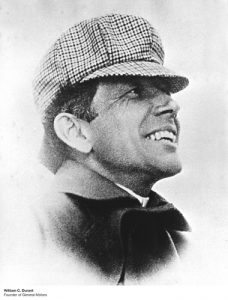
Durant didn’t particularly like automobiles. He was no different than most carriage men in that opinion. But he knew a “self-seller” when he saw one. The Buick, he observed, drew plenty of attention because it could climb hills and run through mud like no other car he had ever seen. If automobiles could be this good, he thought, then maybe it was time to switch.
Once Durant made that decision, Buick’s success was assured. No one could raise money, sell products and plan big organizations like Billy Durant. He went to the 1905 New York Auto Show and took orders for 1,000 Buicks before the company had built 40.
He moved Buick assembly briefly to Jackson, Mich., in 1905 (building more than 700 Model C’s there that year) while he gathered money from Flint banks and businessmen to erect what he called the largest assembly facility in the country on Flint’s north side. He persuaded Charles Stewart Mott (later a GM director for 60 years) to move his axle business from Utica, N.Y., to Flint to build axles for Buick. He promoted Buicks across the country, using Durant-Dort carriage outlets and salespeople as the nucleus of a giant distribution system.
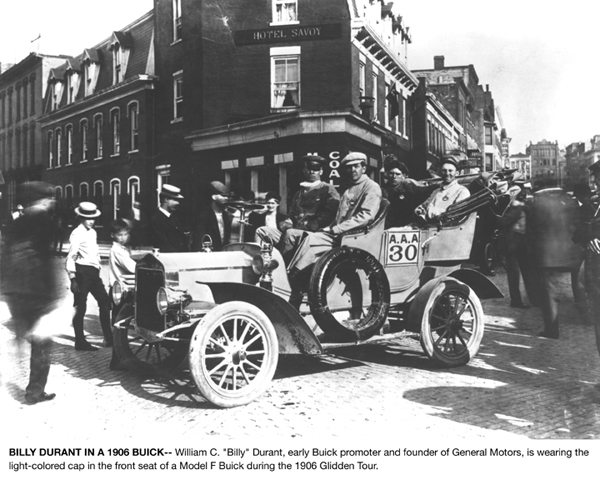
The success of Buick engines was evident on the race tracks, including 1909 successes at Indianapolis Motor Speedway two years before the first Indy 500, and in endurance tests across the country and around the world. Buick was the only car to complete a 1,000-mile Chicago-to-New York relay race in 1906; another set a record (24 days!) from New York to San Francisco that year. A 1912 Buick Model 28 was the first car to travel across South America, driven from Buenos Aires, Argentina, over the Andes to Santiago, Chile, in 1914. Buicks won hill-climbs across the country, including one in 1904 with one of the first 40 Buicks ever built.
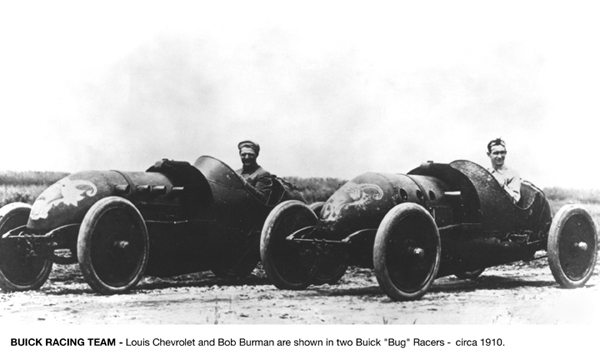
Durant first engaged in merger talks with other producers in the low-price field, including Henry Ford and Ransom Olds (Olds had started Oldsmobile but at that time headed REO).
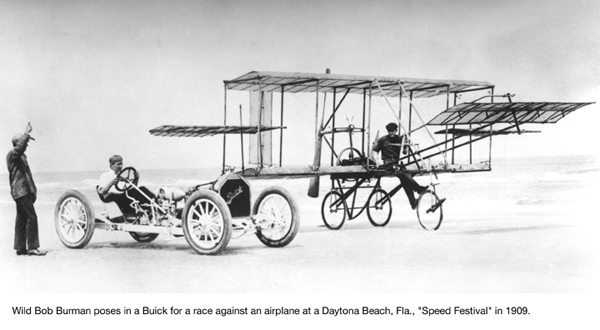
Durant became financially over extended as he pulled more than 30 companies under the GM umbrella in 1908-10. He lost control of GM to bankers in 1910. He and Louis Chevrolet developed the Chevrolet company the following year, and Durant traded Chevrolet stock to regain control of GM in 1915-16. Ironically he succeeded, as GM president, Charles W. Nash, whom Durant had hired into his carriage business and later helped make president of Buick.
Nash had brought Walter Chrysler to Buick as works manager. Durant persuaded Chrysler to stay after his takeover by promoting him to president of Buick. But they were both too strong-minded to co-exist for long. Chrysler was a brilliant manufacturing leader and strengthened Buick for several years but eventually resigned in a dispute with Durant. Not long afterward, in 1920, Durant also resigned, forced from GM leadership in a short depression during which he was again over extended in the stock market.
According to Alfred P. Sloan Jr., who in 1923 became GM president, Buick’s strong reputation and financial position were major factors in pulling the corporation through that period.
Buick’s star climbed steadily during the Roaring 20’s, under the leadership of Harry H. Bassett from 1920 until his untimely death in 1926, with production reaching more than 260,000 units in 1926. The car’s reliability was world famous. In 1923, the renowned writer-traveler Lowell Thomas chose a Buick for the first automotive expedition into Afghanistan. Two years later, Buicks won trophies in Leningrad-to-Moscow endurance and reliability runs, beating more than 40 cars from throughout the world.
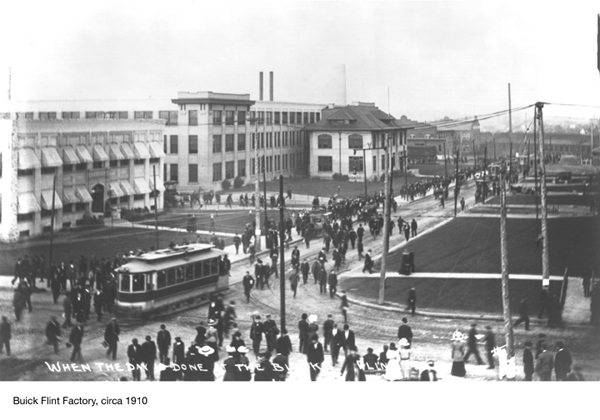
A Buick magazine of the 20’s routinely reported such events as a hill-climb victory in Africa, winning a tug-of-war with an elephant, a trek through New Zealand, and the Sultan of Johore with his Buick in the Far East. In addition to U.S. production, Buicks were built in Canada through an early agreement with the McLaughlin Carriage Co. family. This arrangement led to the creation of GM of Canada.
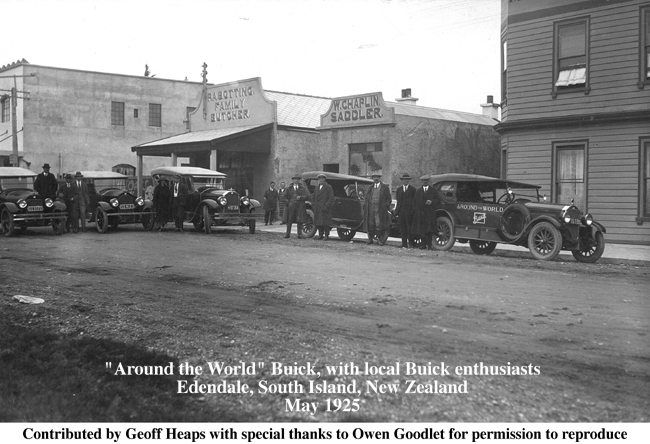
In 1929 Buick opened a sales office in Shanghai, China. Actually, Buicks had been exported to China as early as 1912 and soon became a popular marque among Chinese business and political leaders. And in the 20’s and 30’s, Buicks built in Canada became popular with British royalty.
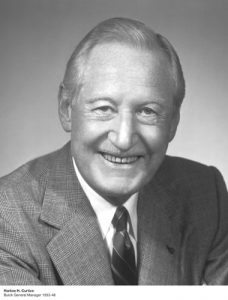

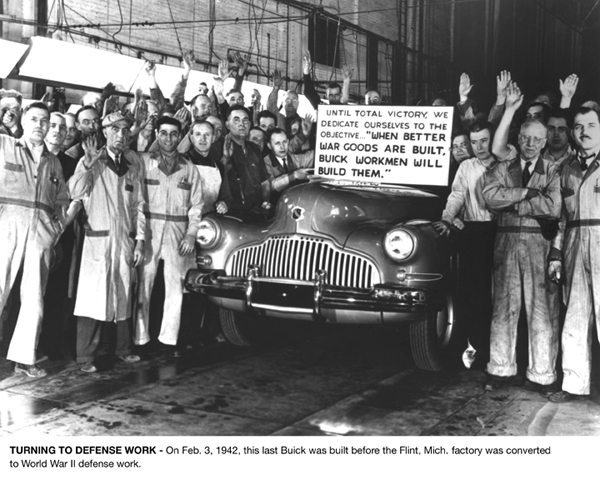
Like other automakers, Buick had to begin the postwar period in late 1945 with warmed-over designs from 1942 for a market that was hungry for new cars. But Buick’s 1942 models had been new and fresh. On some models, front fenders swept back dramatically along the doors to touch the leading edge of the rear fenders, considered an important new design statement. And the ever-famous “carnivorous” pop-art grille had made its debut in 1942. Buick was well positioned for the postwar boom.
Buick quickly expanded its facilities under Curtice, who in late 1948 became a GM executive vice president, a job that led to the GM presidency a few years later. But despite the fact his responsibilities now included all the car and truck divisions, he never really left Buick or Flint. He maintained his home in that city and never owned any other make of car but a Buick.
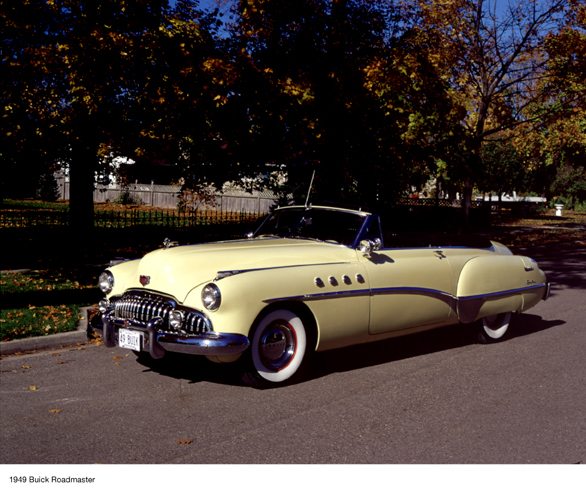
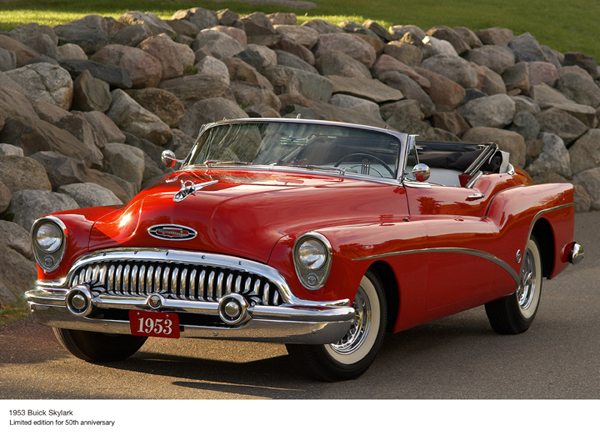
But in the late 1950s, Buick went into another tailspin because of a combination of unpopular styling, product problems, and an economic recession that helped make small cars popular. From a high of nearly 750,000 cars in 1955, sales plunged to fewer than 250,000 units in 1959.
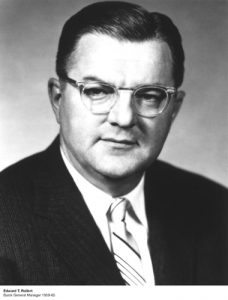
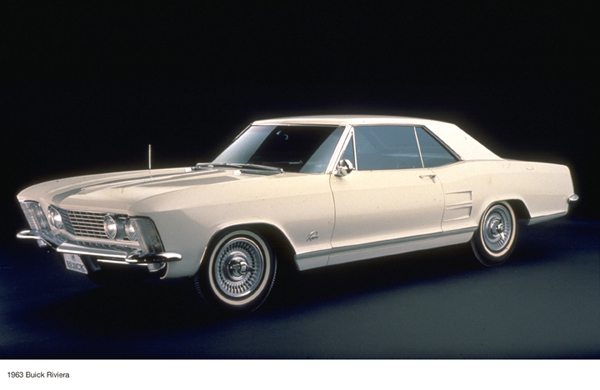
Buick rebounded. The division re-introduced the V-6 and continued to develop economical engines and attractively designed cars that became ever lighter and more innovative. And when the U.S. auto industry as a whole was severely hurt by the high gasoline prices of the early 1980’s, Buick was grabbing more market share. Among heralded models was the first front-wheel-drive Buick, the 1979 Riviera S Type with turbocharged V-6 engine, another Motor Trend “Car of the Year.”
Buick broke sales records in 1984 with more than one million Buicks sold worldwide. In 1985, Buick-powered cars won the pole position and the second spot in qualifying for the Indianapolis 500, the first time since 1931 that an American production-based engine had won the Indy 500 pole. The qualifying success confirmed that Buick’s high-tech engines could be, and were, highly competitive on the race tracks of America. Buick engines powered 11 of the 33 cars in the 1990 Indy 500, more than any other manufacturer and in 1992 won the pole position again with a record-setting performance. That year, 12 Buick-powered cars qualified and one of them, driven by Al Unser Sr., finished third.
Buick’s 1986 and 1987 Regal Grand National, and a limited-edition 1987 GNX, were widely acclaimed as the quickest American-built cars. They were powered by intercooled and turbocharged versions of the 3.8-litre V-6.
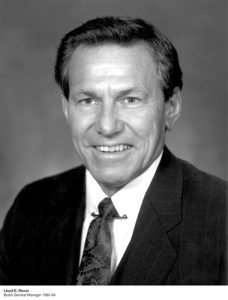
In 1989, Buick City hit its stride. It was ranked No.1 in North America and No. 2 in the world in an initial quality study by J.D. Power and Associates, an independent market research firm. That year, LeSabre was ranked No.1 in North America and No. 2 among 154 domestic and imported models in the Power Initial Quality Survey. It was the first in a long list of Buick successes in various independent surveys and the advertising tagline promptly changed. “The Great American Road Belongs to Buick” was replaced by: “Buick. The New Symbol for Quality in America.”
Defining Buick’s future direction, Edward H. Mertz, who became general manager in 1986, said Buick would provide automobiles with qualities that made them famous “premium American motorcars” that would be substantial, distinctive and powerful. Buick would emphasize its position of providing upscale cars with smooth power and distinctive styling along with rich detail and comfortable accommodation.
One good example was the 1991 Park Avenue Ultra, a curvaceous luxury model with the famous 3.8-liter V-6 engine now supercharged. By the end of the 1990s, Buick was the leading marketer of supercharged cars.
Mertz was succeeded by Robert E. Coletta, Buick general sales and service manager, who had served at GM for more than 41 years, all at Buick. Buick had always boasted of a strong dealer body, and Coletta had nurtured it carefully. As general manager, he also went to Shanghai, China, in December of 1998 to see the first Buick built in China roll off the assembly line. A GM/China joint venture had been created to build GM vehicles in China, and the Chinese had insisted on Buicks, in part because of Buick’s long and illustrious reputation there.
As General Motors evolved as “one company,” Buick headquarters returned from Flint to Detroit in 1998, joining other GM car and truck divisions at Renaissance Center, only a few blocks from a building, still standing, that had housed Buick Auto-Vim and Power Co. at the turn of the previous century. By the end of the 20th century, more than 35 million Buicks had been built.
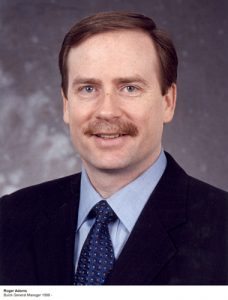
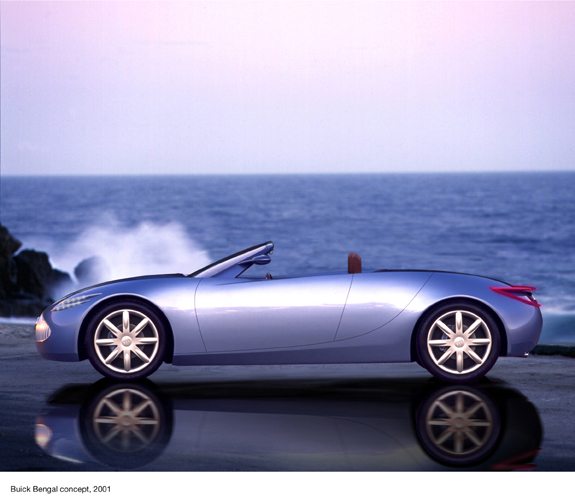
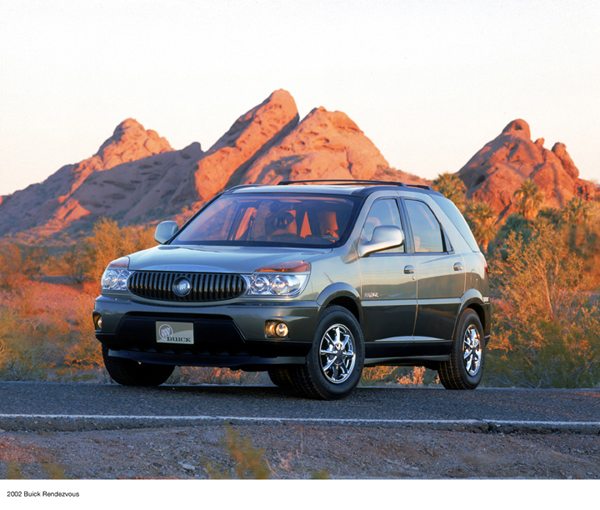
By its centennial year of 2003, the marque that Detroit plumbing inventor David Buick had begun and Flint carriage king Billy Durant had built into a giant had long been an American icon. Adams said new products would build on Buick’s reputation for delivering upscale, high-value vehicles with distinctive and romantic designs, smooth power, overall reliability and a comfortable and secure ride. Or, as Buick today sums it up, “Premium American Style.”
